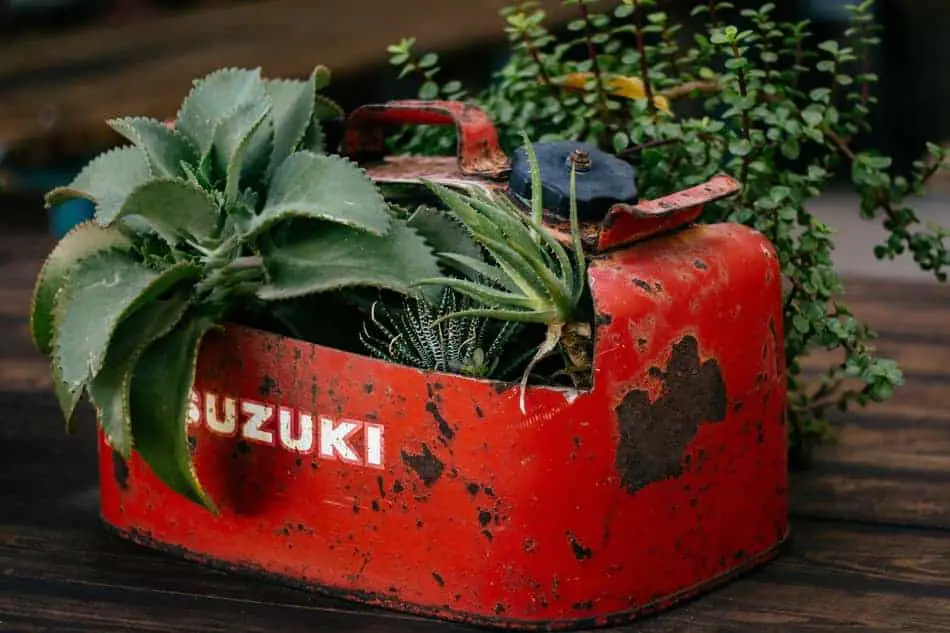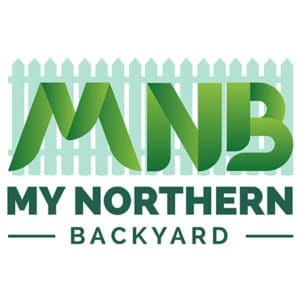
We’re planning to re-do our backyard this summer, and one of the things we’re looking at is planters and planter boxes. So the question came up if the type of material used in a planter or planter box mattered – I did some research.
So does the material used in a planter matter? Yes, but how much depends on what kind of plant you’re growing in the planter. If the plant is likely to be eaten the risks around materials can be a lot higher than if they are just intended to look good.
If you look on Pinterest, there are thousands of choices and suggestions of shape, form, size, materials, properties, etc… for creating planters. From boots to cans to bags to tires – basically anything you can throw dirt in, you can plant in. The question I had was – does it matter what the material is? Does it matter in how well the plant will grow? Does it matter for plants that you plan to eat? Does it matter for other creatures that might pass through my back yard? Here’s what I found:
What Kind of Material Should I Use For My Planter?
What materials you choose for the planter really depend on what you plan to put in the planter (or pot, or whatever you’re holding the plant in, we’re not discriminating. We are going to use the word planter for all of the above for the rest of the article, though.) If the plant you’re growing in this particular planter is ornamental, decorative, or just mean to look good (or damned good!) then there are fewer qualifications than if you’re going to put whatever grows in that plant into your body.
For any planting you’re doing, there are a few things to consider about the vessel you’re putting your plants into. When choosing a planter consider the following:
- What the planter is made of (the type of material)
- What the planter used to be (and what kind of things used to be held in it.
- The basic functionality of the planter (drainage, temperature management, weight)
Let’s go through these one by one and consider if it impacts the planting.
What the Planter is Made Of: The Type of Material
When choosing a planter we have to consider what it’s constructed of. Since mother nature always seems to find a way, anything that can hold soil can grow something – but that doesn’t mean that any plant can prosper in anything that can hold soil. While you can probably get weeds in anything, the wrong kind of planter can impact the health and prosperity of what is planted in it.
If the planter is made of materials that contain chemicals that can damage your plant – including bad-for-you plastics(#3/#6/#7), broken polystyrene, lead, asbestos or concrete – the planter could leach chemicals into the soil with rain or watering that could damage or kill your plant. There are cases for and against tire gardening, but personally I wouldn’t risk it for growing food (good article here).
If the planter is made of materials that can rot the planter could quickly degrade – and if the materials contain chemicals, they could quickly leach into your plants and damage them. They could also hold excess water, causing the plants to rot away from below. This doesn’t mean don’t use planters that can rot – just make sure you keep an eye on them from time to time. They will likely need to be replaced before too long.
What the Planter Used to Be: What It Used To Hold
If your planter is new material, this isn’t even a consideration. If it started life as something else and is being recycled to contain plants then you need to consider what it used to hold.
Porous materials that used to contain harsh chemicals can damage even ornamental plants, while allowing chemicals that could actually harm you into food plants. So while it might be interesting to grow tomatoes in an old bin or tub, or use old railroad ties for a planter box – consider what was held in there before you plant.
No matter what material your planter is made of – if it’s recycled you have to scrub it clean first. Warm soapy water is a good start for any recycled item.
The Basic Functionality of the Planter: Will It Work
From my research, there are basically three things that you need to consider around functionality of a planter, and that can be summed up as:
- Will it drain?
- Will it manage temperatures?
- Can you move it if you want to move it?
Drainage is fairly obvious – you don’t want your plants to get too wet and rot, or too dry and die. You can drill holes in most recycled items to make sure you get proper drainage. If it’s something that you can’t drill holes in and doesn’t have a way to get water out, the best you can do is use a high quality potting soil – or choose a different container.
Temperature management is important for some plants, and not for others. If your plant is temperature sensitive, picking the right container is important. To keep soil warmer in containers pick a well insulated material or darker colored pots, dark colored mulch, and put them in a sunny place. To keep soil cooler, the opposite applies. You can find a great article about temperature control and garden containers here.
Consideration about moving a planter only matters if you’re actually interested in moving it. If a plant needs to go in and out of doors in order to withstand temperature changes, or you plan to move it from place to place, the portability of the container will be important. Lightweight pots, recycled items, hanging baskets and grow bags are ideal for this kind of planting. If moving it is not an issue – forget about it.
How Can I Avoid Issues With Planter Material?
If you desperately want to plant in a material that isn’t suitable for the plant there are a couple of approaches to take. If the decorative plater is large enough, you can use a smaller pot inside the larger pot. This is called a cachepot or double potting and it will not only protect the decorative planter, but also the plants from the materials of the planter. Make sure that the cachepot also has drainage holes in it or you might find yourself drowning your plant. If the decorative planter doesn’t have any holes, you can consider laying gravel or clay shards down to elevate the cachepot in the container to allow extra water to drain out of the soil.
The second method is to line the planter with a material that will protect the soil from the planter. Plastic, burlap, cheesecloth, coffee filters – what lining you use depends on what you’re protecting and why. If the planter you want to use is small but unsuitable for growing, something like the bottom of a drink bottle or milk jug might fit in to hold the soil. Make sure the lining is properly cleaned before using it and also had drainage holes.
Related Questions
Do I need to put rocks or gravel in the bottom of my planter? Not underneath the soil – rocks in the pot or planter itself won’t help the plant. Water is attracted to finer materials rather than air pockets, so rocks underneath soil won’t do much but block the drainage holes. If you do want to use gravel, put it into the drainage tray or inside the decorative planter in a planter/pot build.
Do I need drainage holes in my planter? It depends on the plant, but most probably. If you can’t get drainage holes and it’s big enough, use a cachepot and some gravel underneath the cachepot to make sure your plant gets proper drainage.
Where do I find out more about what materials to use? A great and detailed list of materials for planters with their pros and cons can be found here. Good luck and happy planting!

